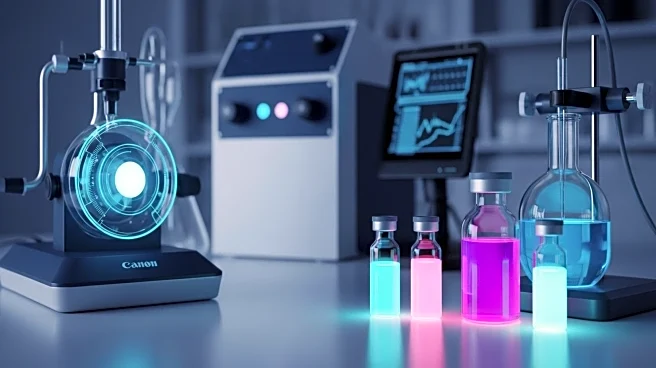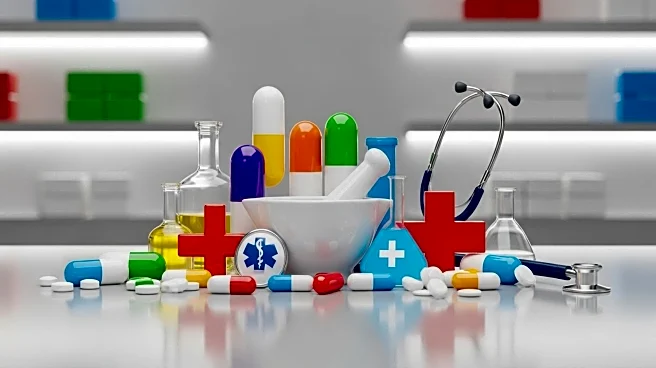What is the story about?
What's Happening?
Recent developments in the healthcare sector highlight the critical role of pharmacists in addressing emerging health challenges and implementing new treatment guidelines. The Pharmaceutical Journal reports on the need for pharmacist workforce development, emphasizing protected learning time and broader career pathways. A significant finding from an analysis of end-of-life symptom control medicine incidents revealed that 59.7% involved patient harm, primarily due to administration issues. Additionally, a polypharmacy program aimed at reducing overprescribing could have saved the NHS over £1 million. New interim guidelines from the British HIV Association introduce changes in antiretroviral treatments, including injectable therapies and recommendations for those with drug resistance. Research in respiratory care suggests a two-in-one asthma inhaler significantly reduces attacks, and a new nasal adrenaline spray for anaphylaxis is now available. Early-stage research has also developed a molecular sensor for influenza detection, potentially leading to low-tech screening methods.
Why It's Important?
These developments underscore the evolving role of pharmacists in healthcare, particularly as they adapt to new research and treatment guidelines. The findings on medication incidents highlight the need for improved training and protocols to minimize patient harm. The potential cost savings from the polypharmacy program demonstrate the financial impact of effective medication management. The updated HIV guidelines and advancements in respiratory care reflect ongoing efforts to enhance patient outcomes through innovative treatments. The introduction of new screening methods and therapies, such as the influenza sensor and nasal adrenaline spray, could revolutionize disease detection and emergency response, respectively. These changes have significant implications for healthcare providers, policymakers, and patients, emphasizing the need for continuous education and adaptation in the medical field.
What's Next?
As these new guidelines and research findings are implemented, healthcare professionals, particularly pharmacists, will need to stay informed and adapt their practices accordingly. The focus on protected learning time and career development for pharmacists is likely to continue, ensuring they are equipped to handle emerging health challenges. The healthcare system may see further integration of innovative screening and treatment methods, potentially leading to improved patient care and cost savings. Ongoing research and clinical trials will likely yield additional insights and advancements, necessitating updates to current practices and guidelines. Stakeholders, including healthcare institutions and regulatory bodies, will need to collaborate to ensure these changes are effectively integrated into the healthcare system.
Beyond the Headlines
The emphasis on pharmacist development and the introduction of new treatment guidelines highlight broader trends in healthcare, such as the shift towards personalized medicine and the integration of technology in patient care. The potential for low-tech screening methods, like the influenza sensor, suggests a move towards more accessible and cost-effective healthcare solutions. These developments also raise ethical considerations regarding patient safety and the equitable distribution of new treatments. As the healthcare landscape evolves, there will be a need for ongoing dialogue and collaboration among healthcare professionals, researchers, and policymakers to address these challenges and opportunities.
AI Generated Content
Do you find this article useful?













